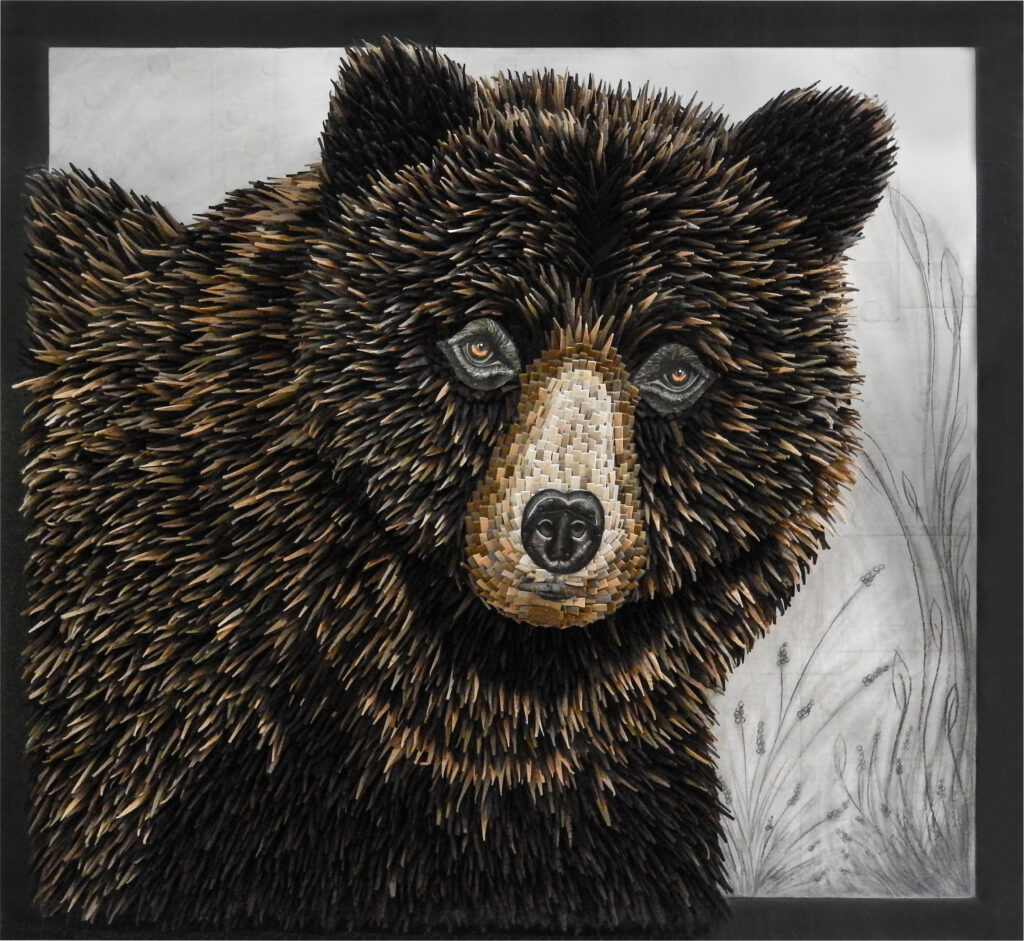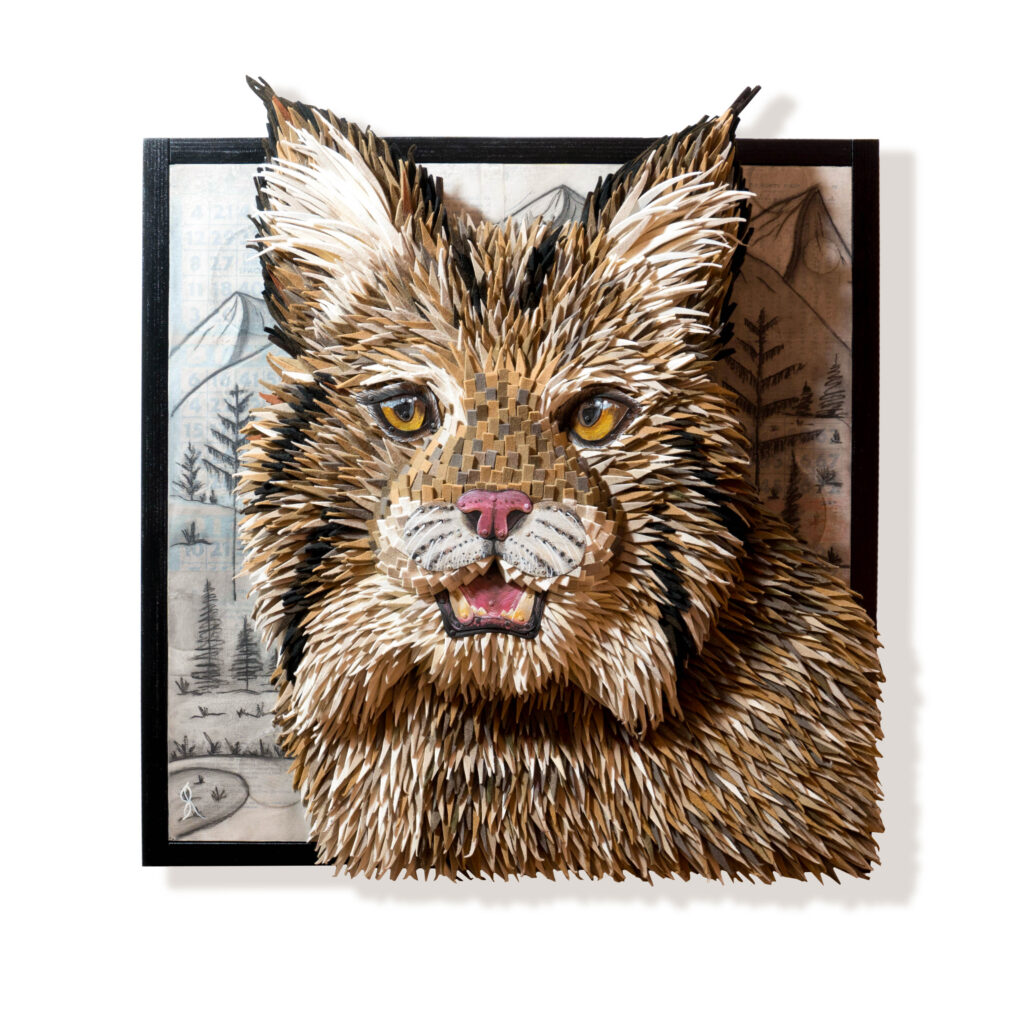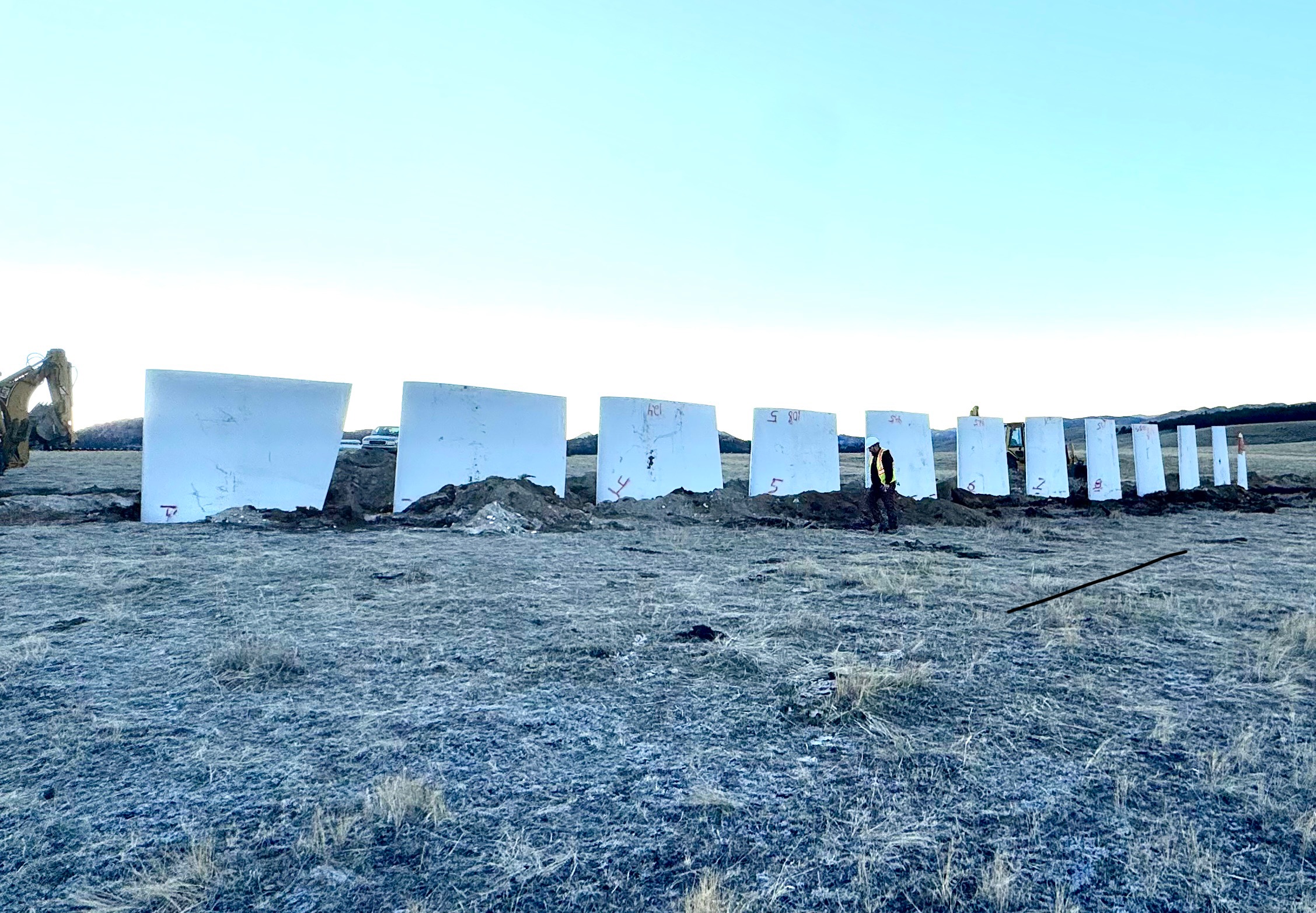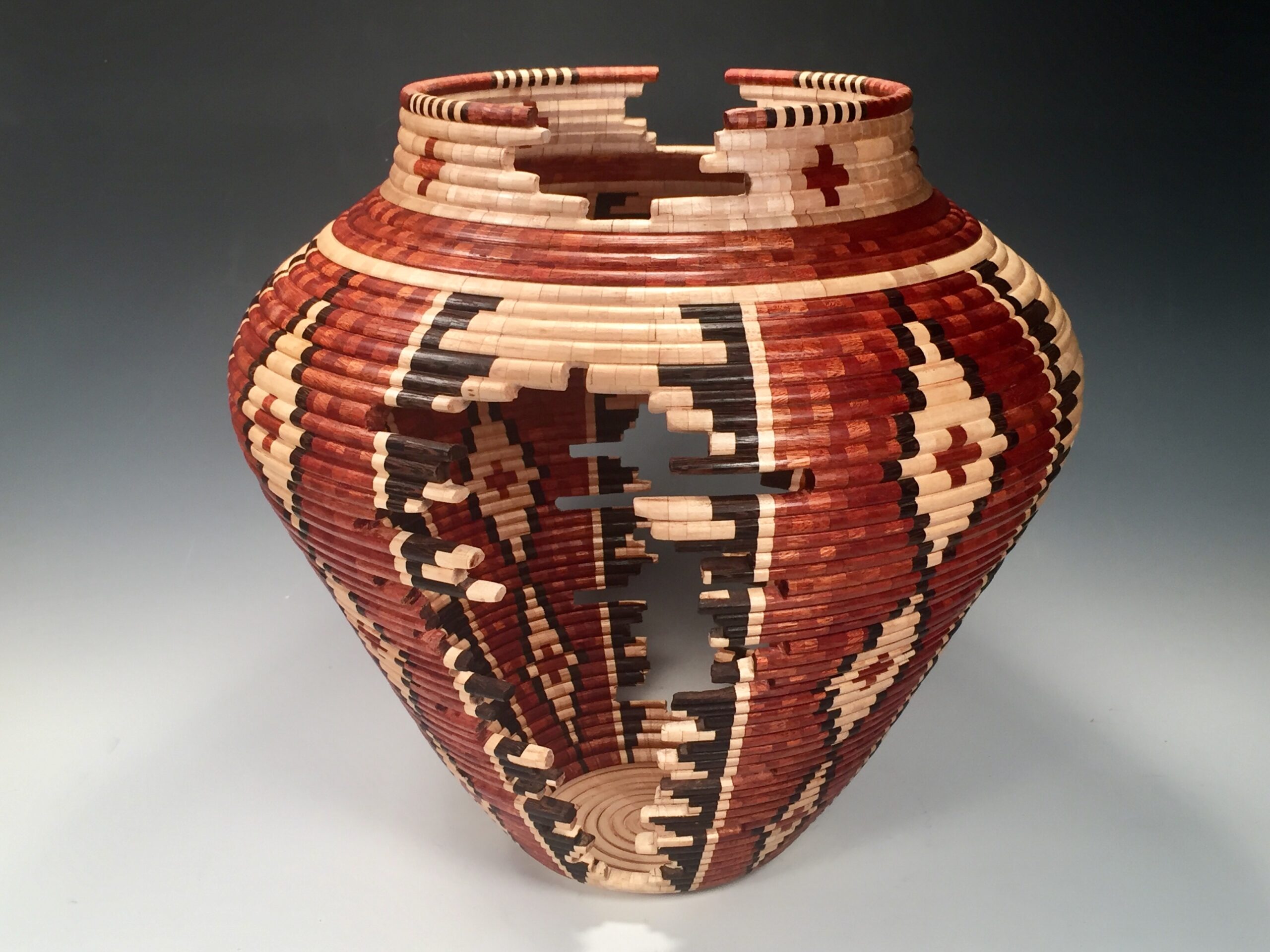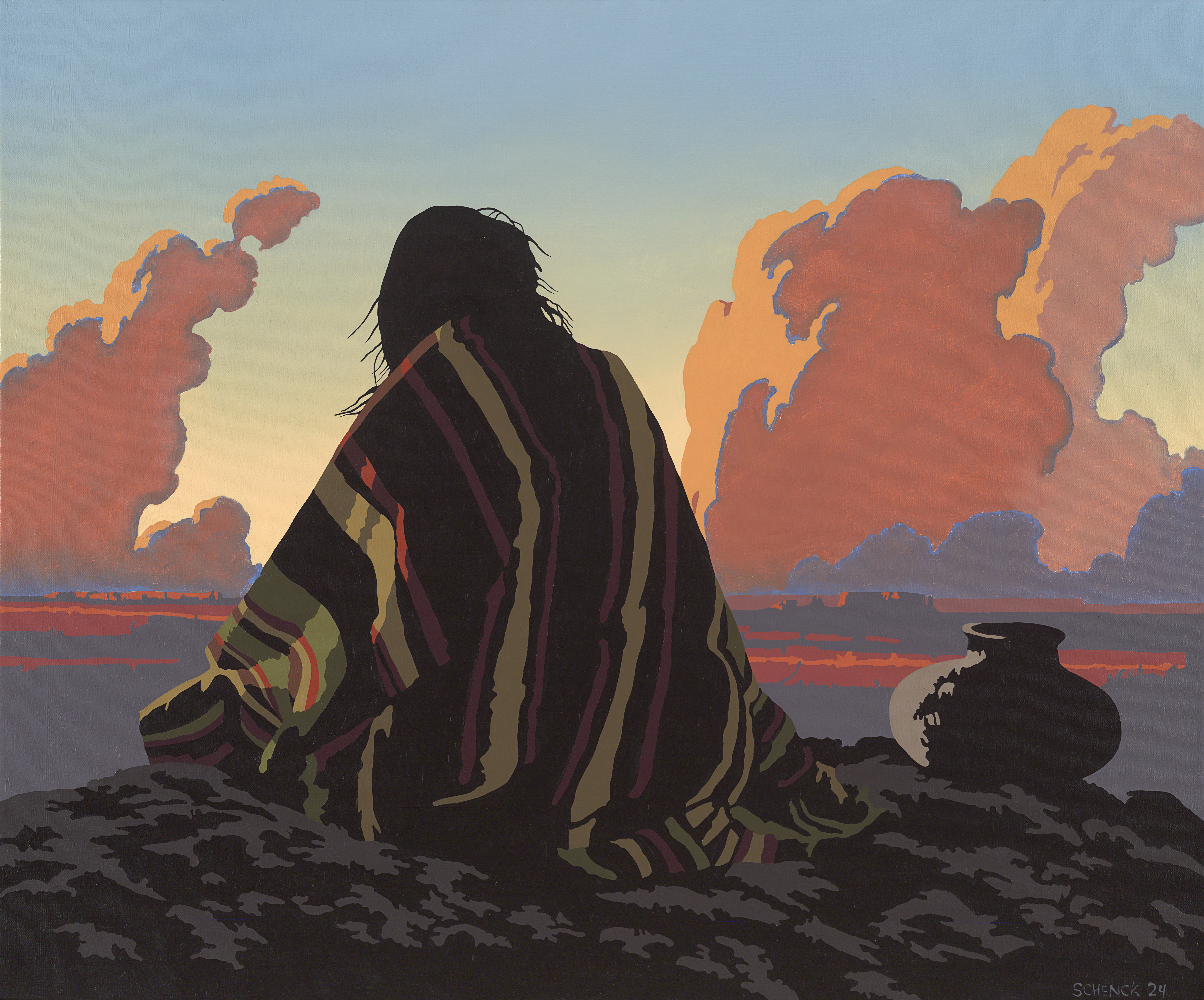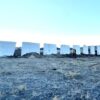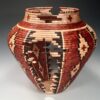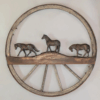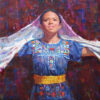Brad and Sundie Ruppert didn’t start out as textile artists. But an on-a-whim experiment with beaver felt hat scraps changed everything for this collaborative artist couple.
The artists, based in Norwalk, Iowa, started out doing sculpture with found and thrifted objects, plus wood and metal custom signage. Eleven years ago, they made a custom sign for Greeley Hat Works in Greeley, Colorado, and toured the facility while they were there to install the sign.
“While on the tour, Brad picked up the rings that they cut off of the brims of the hats right before they shape them and asked what they did with them,” Sundie says. “And Trent [Johnson, the owner] said, ‘If y’all can figure out something to do with them, we’ll save them for you. I literally looked at Brad like he was crazy because I’m like, ‘We work with wood and metal, and we are not textile people. And he said, ‘Just let me take a bag of it home and see what I can come up with.’ And that’s what he did.”
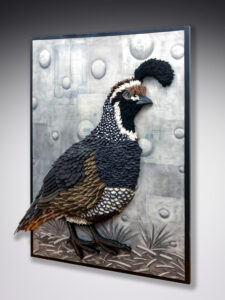
The two artists started with a simple sculpture of a crow, then a feather, then a rooster. “When we did the rooster, we knew we were on to something,” Sundie says. “We’d gotten a bunch of motion in the feather pieces and texture, and the face, and that was it—off to the races.”
For the first 100 years of Greeley Hat Works’ history, the brim scraps went into a landfill. Now that the Rupperts use the materials, which include thousands of pounds of felt, not a single ounce goes to waste. “We take everything except his paper products, which has almost turned [Greeley Hat Works] into a zero-waste company,” Brad says. Sundie adds, “We’re not just making art, we’re making a difference.”
Both Brad and Sundie work on every piece, but do so completely separately. Sundie does the original drawings and color palettes. Then Brad uses an overhead projector to blow up the designs to scale and works on carving the multi-level wood base. Both artists help with dyeing the felt scrap rings before Brad cuts them apart for the piece.
Each felt piece is nailed to the wooden base, with some sculptures using more than 8,000 nails. The top layer, typically the face of an animal, is done with metal flashing that Sundie cuts and paints. To finish the piece, she also does the backgrounds, often using collaged paper and drawn elements in mixed media.
Sustainability isn’t the only unique part of working with hat felt. “The other thing that we have discovered, thanks to clients, is that our artwork is all acoustically functional; it dampens sound, so it helps reduce the echo in homes,” Sundie says. “The other thing that we have heard from another client is the benefits that family members on the autism spectrum have from our artwork, as well, both tactilely and acoustically. One client has a non-verbal, autistic son, and the thing that she notices is that he no longer wears his noise canceling headphones at home since they got a piece of our artwork.”
Since 2021, the couple has spent winters in Arizona, selling to collectors at the Scottsdale Celebration of Fine Art. This year’s Celebration of Fine Art runs from January 18 to March 30. They have been a part of the event for the past few years and, because of their success there, they can do fewer local shows in the summer and spend more time in the studio working on commissions.
“[Celebration of Fine Art] has given us the gift of freedom to do more of what we want to do, and our clients are here,” Sundie says. “It’s just a wonderful, concentrated, curated clientele.” The Rupperts have also done some collaboration pieces with some of the other artists at the Celebration of Fine Art, and it has become an inspirational, creative community that they can thrive in.
To learn more about the Rupperts, visit www.sculpturalfelt.com. For more information on the Celebration of Fine Art, visit www.celebrateart.com.
Subscribe to our free email newsletter.
